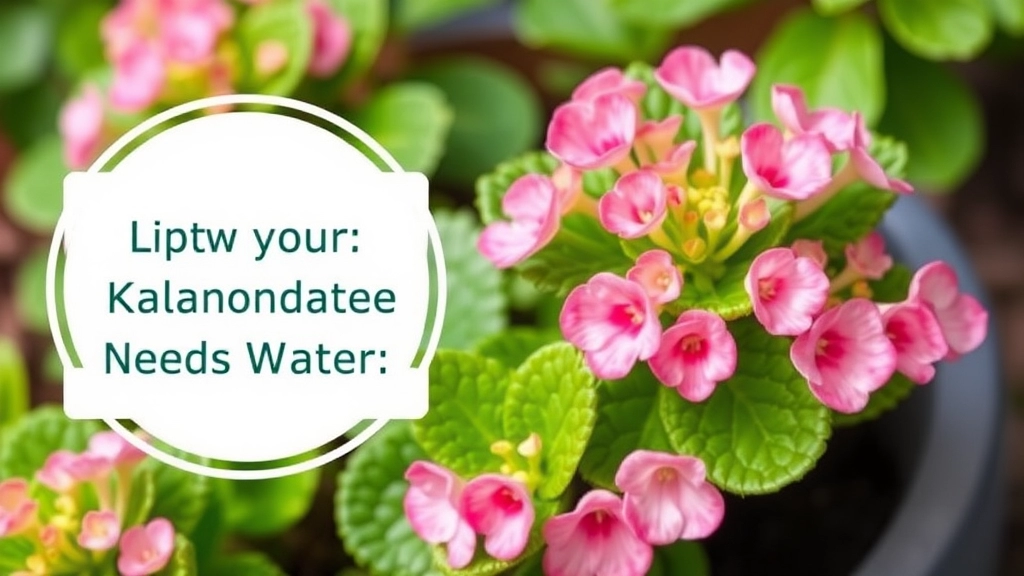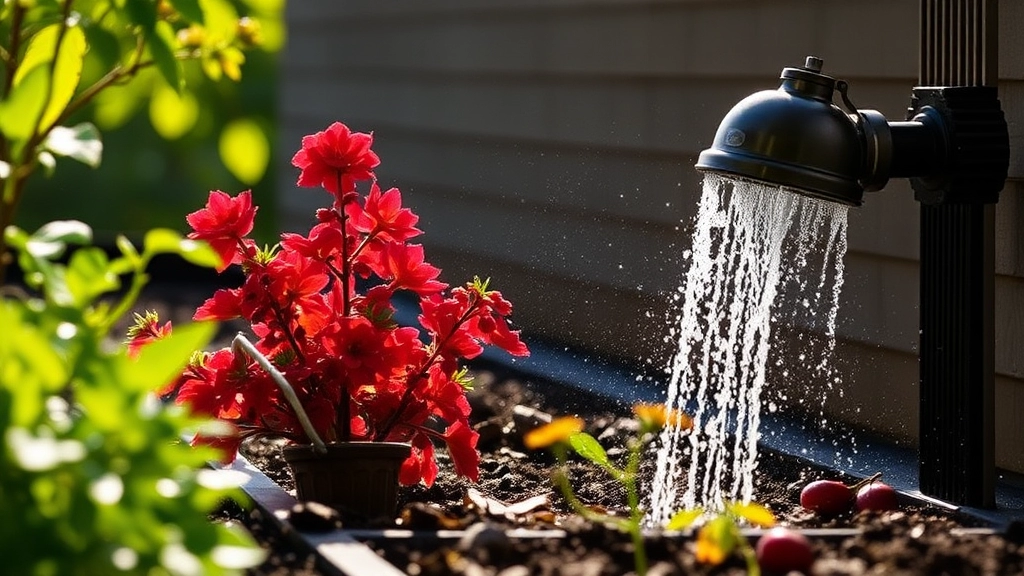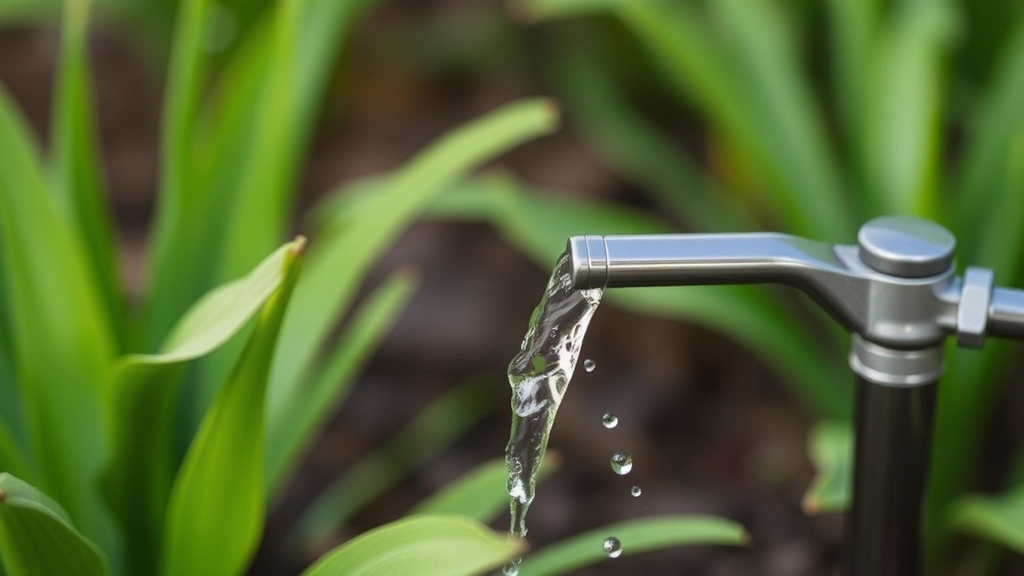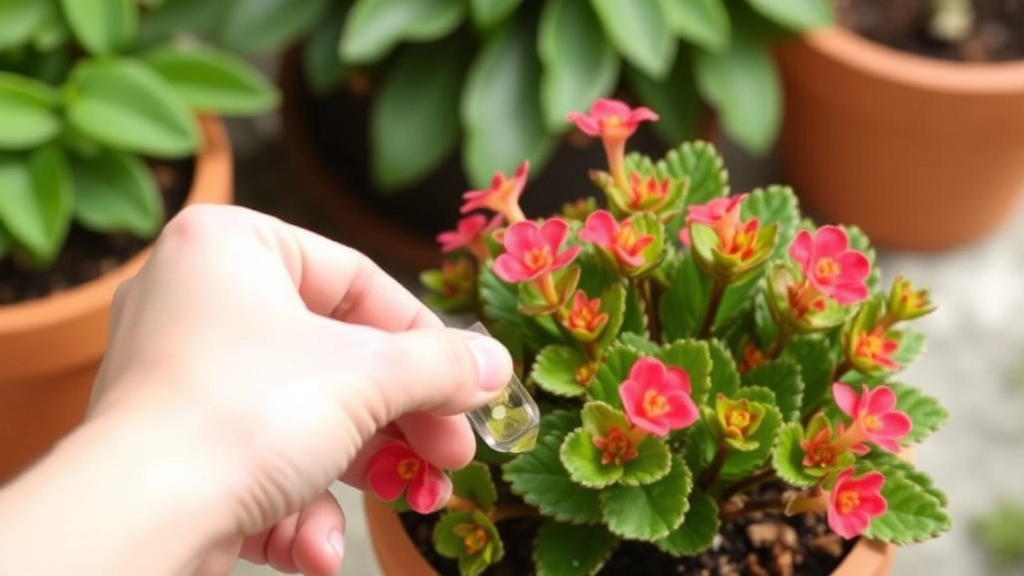How Often to Water a Kalanchoe Plant
Wondering how often you should water a Kalanchoe plant? You’re in the right place. Keeping this succulent happy isn’t as tricky as it seems. In my experience, the key is to let the soil dry out between waterings. Overwatering can lead to root rot, so it’s better to err on the side of caution.
Watering Frequency
Typically, watering your Kalanchoe every two to three weeks works well, especially during its growing season in spring and summer. In winter, you can stretch it to once a month. Always check the soil moisture before adding water. Trust me, your Kalanchoe will thank you for it!
Ideal Watering Schedule for Kalanchoe Plants
Are you struggling to find the perfect watering routine for your Kalanchoe plants? You’re not alone. Many plant enthusiasts face the challenge of keeping these beautiful succulents thriving without over or under-watering them.
Understanding Kalanchoe Needs
Kalanchoe plants thrive in well-draining soil and require a specific watering schedule to flourish.
- Frequency: Water your Kalanchoe every 2-3 weeks during the growing season (spring and summer).
- Winter Care: Reduce watering to once a month in the dormant winter months.
Signs of Proper Watering
To ensure your Kalanchoe is getting the right amount of water, keep an eye on its leaves. Healthy leaves should be plump and firm, while shrivelled or mushy leaves can indicate watering issues.
Best Practices for Watering
When watering, consider the following:
- Water Thoroughly: Ensure water drains out of the pot’s bottom to avoid root rot.
- Check Soil Moisture: Stick your finger into the soil; if it feels dry an inch down, it’s time to water.
For more detailed information on caring for specific varieties, check out our Kalanchoe Flowering Season Care Guide and our Chocolate Soldier Plant Care Tips.
Signs Your Kalanchoe Needs Water

Alright, so you’ve got your Kalanchoe looking all lovely, but how do you know when it’s thirsty?
It’s not always easy to tell, but there are some clear signs that can help you figure it out.
- Leaves Wrinkling or Drooping
If those plump leaves start looking a bit shrivelled or droopy, it’s a big red flag. Kalanchoe plants store water in their leaves, so when they’re not getting enough, those leaves will show it. - Soil Is Bone Dry
Stick your finger about an inch into the soil. If it feels like the Sahara Desert in there, it’s time to give your plant a drink. - Leaf Colour Changes
Healthy Kalanchoe leaves are usually vibrant green. If they start turning a dull colour or even yellowing, it might be a sign of dehydration. - Flower Droop
If your Kalanchoe is flowering, droopy blooms can indicate that it’s not getting enough water. Keep an eye on those blossoms; they’ll tell you a lot! - Overall Plant Weakness
A generally weak or stunted look can also hint that your plant is in need of some hydration. If it seems like it’s struggling to hold its own, a good soak might be just what it needs.
Understanding the factors that influence how often you should water your Kalanchoe is essential for keeping your plant healthy and thriving.
### Environmental Conditions
– **Temperature**: Warmer temperatures can lead to quicker evaporation of moisture, necessitating more frequent watering.
– **Humidity**: Low humidity levels may dry out the soil faster, while high humidity can retain moisture longer.
### Soil Type
– **Drainage**: Well-draining soil prevents water from sitting around the roots, reducing the need for frequent watering. For more details, you can check out our [complete care guide for Kalanchoe daigremontiana](https://planthq.org/complete-care-guide-for-kalanchoe-daigremontiana-pink-butterflies/).
– **Composition**: A mix of potting soil with sand or perlite allows for better aeration and drainage.
### Plant Size and Age
– **Mature Plants**: Larger, established Kalanchoe plants often require more water compared to younger, smaller ones.
– **Growth Stage**: During blooming or active growth, your plant may need more water than when it is dormant.
### Pot Size and Material
– **Size**: A larger pot holds more soil, which retains moisture longer than a smaller pot.
– **Material**: Terracotta pots absorb moisture and can dry out faster than plastic pots, affecting your watering schedule.
### Seasonal Changes
– **Summer vs. Winter**: In summer, you may need to water more frequently due to increased light and heat. In winter, the plant’s growth slows, requiring less water. For seasonal care tips, refer to our [kalanchoe panda plant care guide](https://planthq.org/kalanchoe-panda-plant-care-guide-tips-for-healthy-growth/).
Seasonal Watering Adjustments

As we delve into the seasonal aspects of caring for your Kalanchoe, it’s essential to recognise how changing weather can impact your watering routine.
Spring and Summer: Increased Watering Needs
During the warmer months, Kalanchoe plants enter their growing phase. This is when they require more water to support their vibrant growth and blooming.
- Frequency: Water every 1-2 weeks.
- Signs of Need: Look for slightly dry soil or wilting leaves.
- Technique: Ensure the water drains well to prevent root rot.
Autumn and Winter: Reduced Watering
As temperatures drop, your Kalanchoe will enter a dormant phase. This means it needs less water, as the plant conserves energy.
- Frequency: Water every 2-4 weeks.
- Signs of Need: Dry soil and firm leaves indicate it’s time to water.
- Technique: Water less frequently and allow the soil to dry out completely between sessions.
Adjusting to Temperature Changes
Keep an eye on temperature fluctuations, as they can affect your plant’s watering needs.
- Hot Days: Increase watering frequency slightly.
- Cold Nights: Decrease watering to avoid over-saturation.
Best Watering Techniques for Kalanchoe
When it comes to watering your Kalanchoe, the technique you use can make all the difference. Many plant enthusiasts worry about overwatering or underwatering, and rightly so. So, how do you strike the perfect balance?
Watering Techniques to Consider
- Bottom Watering:
- Place your Kalanchoe pot in a basin of water.
- Allow the soil to absorb moisture from the bottom for about 30 minutes.
- This method encourages deep root growth and prevents waterlogging.
- Soil Moisture Check:
- Before watering, check the top inch of soil.
- If it feels dry, it’s time to water; if it’s still moist, wait a few days.
- This simple check can prevent unnecessary watering.
- Use a Watering Can with a Narrow Spout:
- This allows for precision when watering.
- Aim to water the soil directly, avoiding the leaves to prevent rot.
- Watering Frequency:
- Generally, water every 2-3 weeks during the growing season.
- Adjust based on the climate and season.
- Time of Day:
- Water in the morning to allow excess moisture to evaporate during the day.
- This helps prevent fungal issues.
Additional Tips
- Avoid Watering During Dormancy:
- Kalanchoes naturally slow down in winter.
- Cut back on watering during this time to prevent root rot.
- Monitor Drainage:
- Ensure your pot has proper drainage holes.
- Excess water should flow out freely.
- Use Well-Draining Soil:
- A cactus or succulent mix is ideal.
- This helps maintain the right moisture level.
For more detailed care tips, check out our Kalanchoe Tomentosa watering guide. If you’re interested in exploring different varieties, our guide to top Kalanchoe succulent varieties is a great resource.
Common Watering Mistakes to Avoid

Have you ever wondered why your Kalanchoe isn’t thriving despite your best efforts?
Let’s dive into some common watering mistakes that could be holding your plant back.
1. Overwatering
This is the biggest culprit for Kalanchoe owners.
- Signs: Yellowing leaves, mushy stems, or a musty smell from the soil.
- Tip: Always check the top inch of the soil. If it’s dry, it’s time to water.
2. Underwatering
On the flip side, not giving your plant enough water can also be an issue.
- Signs: Wilting leaves or a shriveled appearance.
- Tip: If you notice these signs, give your plant a good drink and monitor it closely.
3. Ignoring the Pot Drainage
A pot without drainage holes can trap water, leading to root rot.
- Tip: Always choose pots with good drainage to allow excess water to escape.
4. Watering on a Schedule Instead of Checking Soil
Sticking to a rigid schedule can be misleading.
- Tip: Instead, check the soil moisture regularly. Your plant will thank you for it!
5. Using Cold Water
Cold water can shock your Kalanchoe’s roots.
- Tip: Use room temperature water for a gentler approach.
6. Watering in Direct Sunlight
Watering while the sun is blazing can cause the water to evaporate too quickly.
- Tip: Water in the early morning or late afternoon for best results.
By avoiding these common mistakes, you’ll be on your way to a healthier, happier Kalanchoe.
Have you noticed your Kalanchoe wilting despite regular care? Overwatering is a common issue that can lead to serious problems for these resilient plants. Thankfully, with the right approach, you can bring your Kalanchoe back to life.
First, it’s essential to determine the extent of the overwatering. Check for the following signs:
– **Yellowing Leaves**: This indicates stress from excess moisture.
– **Soft, Mushy Stems**: A sign of rot, often caused by prolonged exposure to water.
– **Root Rot**: Gently remove the plant from its pot and inspect the roots. If they feel squishy or look brown, they may be rotting.
If you’ve identified overwatering, follow these steps to help your plant recover:
1. **Remove from Pot**: Carefully take your Kalanchoe out of its pot to assess the roots.
2. **Trim Affected Roots**: Use sterilised scissors to cut away any rotten roots. This prevents the spread of decay.
3. **Let It Dry**: Place the plant on a paper towel or newspaper for a few hours. This allows excess moisture to evaporate.
4. **Repot in Fresh Soil**: Choose a well-draining soil mix and a pot with drainage holes. This helps prevent future overwatering.
5. **Water Sparingly**: After repotting, wait a week before watering again. When you do, ensure the soil is dry to the touch before adding more water.
After taking these steps, keep a close eye on your Kalanchoe. Look for signs of recovery, such as new growth or firm leaves. Adjust your watering schedule based on the plant’s needs, ensuring you don’t repeat the same mistake.
For more detailed advice on caring for specific varieties, check out our guide on [Kalanchoe Mother of Thousands care](https://planthq.org/complete-guide-to-caring-for-kalanchoe-mother-of-millions-plant/) and learn about the [medicinal properties of Kalanchoe](https://planthq.org/kalanchoe-medicinal-properties-health-benefits-uses/).
Tips for Maintaining Healthy Kalanchoe Soil Moisture
So, how do you keep your Kalanchoe thriving without drowning it or leaving it thirsty?
It’s all about finding that sweet spot with soil moisture.
Here are some straightforward tips to help you maintain the right moisture level:
FAQs about Watering a Kalanchoe Plant
How often should I water my Kalanchoe plant?
The watering frequency depends on the season. During spring and summer, water every 1-2 weeks. In autumn and winter, reduce watering to every 2-4 weeks.
What are the signs that my Kalanchoe plant needs water?
Look for wrinkling or drooping leaves, bone-dry soil, leaf color changes, droopy flowers, and overall plant weakness. These are clear indicators that your Kalanchoe needs hydration.
How can I avoid overwatering my Kalanchoe plant?
Check the top inch of the soil before watering. If it’s dry, it’s time to water. Also, ensure your pot has good drainage to prevent water from trapping and causing root rot.
Can I water my Kalanchoe plant with cold water?
No, using cold water can shock the plant’s roots. Always use room temperature water for watering your Kalanchoe.
Is it okay to water my Kalanchoe plant in direct sunlight?
It’s best to avoid watering in direct sunlight as it can cause the water to evaporate too quickly. Water your plant in the early morning or late afternoon for optimal results.
How do temperature changes affect my Kalanchoe’s watering needs?
During hot days, you might need to increase the watering frequency slightly. Conversely, on cold nights, reduce watering to avoid over-saturation.
What should I do if my Kalanchoe plant shows signs of underwatering?
If you notice wilting leaves or a shriveled appearance, give your plant a good drink and monitor it closely to ensure it recovers.
Why is my Kalanchoe not thriving despite regular watering?
Common mistakes like overwatering, using pots without drainage, and watering on a rigid schedule instead of checking the soil can hinder your plant’s growth. Address these issues to help your Kalanchoe thrive.
References
-
Kalanchoe Plant Care – The Spruce
-
How to Care for a Kalanchoe – Gardening Know How
-
Kalanchoe: How to Grow and Care for Kalanchoe Plants – The Old Farmer’s Almanac
